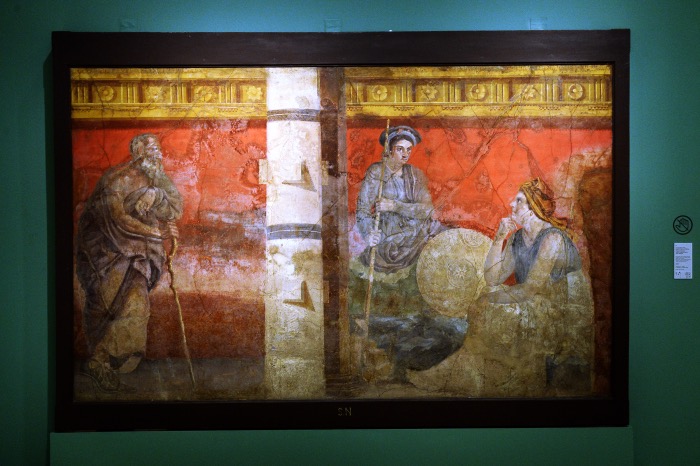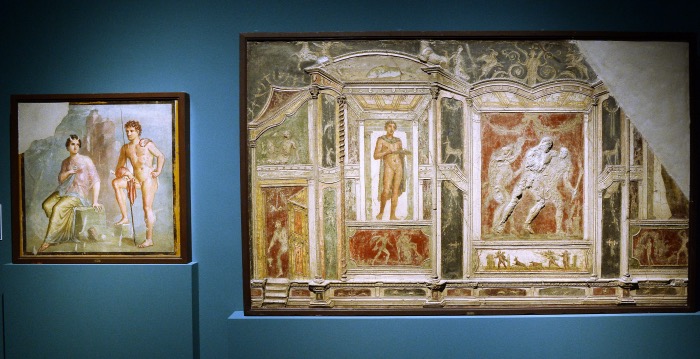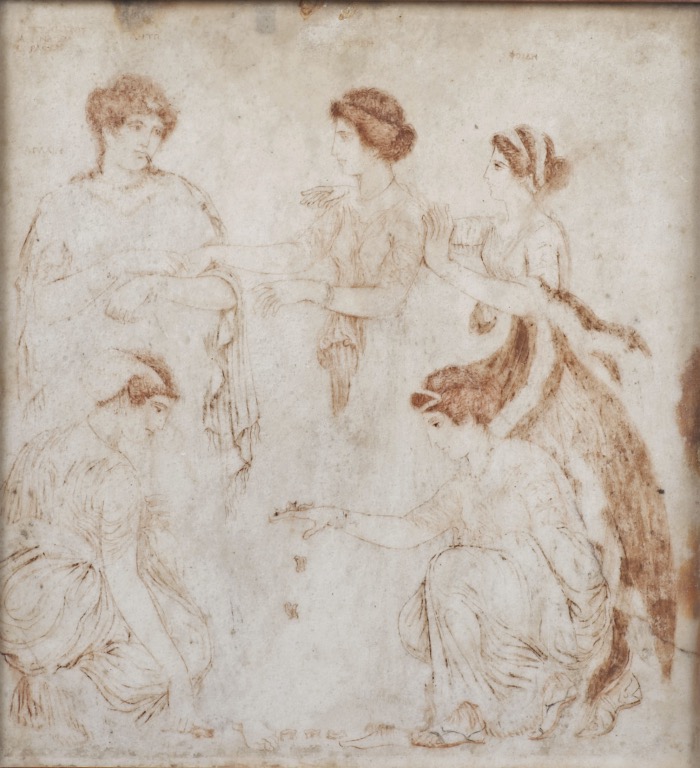
THE PAINTERS OF POMPEII ON SHOW IN BOLOGNA
An exhibition that focuses on the figures of the pictores, i.e. the artists, craftsmen and painters of Pompeii, who decorated the houses of Pompeii, Herculaneum and the Vesuvian area.
It sheds light on the techniques, tools, colours and models used by the artists who worked in one of the most lively and stimulating areas of the Roman Empire.
The important patrimony of images that the artists left us, the splendid frescoes in bright colours and the large-scale works that still amaze us today, reflect the tastes and values of a society and patrons with different sensibilities and still to be discovered.
The painters of Pompeii

Little information has come down to us about the artists and painters of Pompeii, authors of the extraordinary works that have been discovered, and of the many that are certainly waiting to see the light again. Hardly any names are known to us, and many studies still need to be carried out to understand who the most important masters and workshops were.
A secret Pompeii that requires investigation, study and above all to bring to light the names of these extraordinary artists.
Thanks to the numerous pictorial testimonies preserved after the eruption in 79 A.D. and brought to light by the great Bourbon excavation campaigns in the 18th century, the Vesuvian towns constitute a privileged observatory for a better understanding of the internal organisation and workings of the painting workshops.
The exhibition in Bologna, with the emblematic title I Pittori di Pompei (Painters of Pompeii), turns the spotlight for the first time on an extraordinary corpus of works and examples of Roman painting.
These are works from those domus famous for the beauty of their wall decorations, from which they often also take on the name by which they are known.
The domus of, for example, the Tragic Poet, Punished Love in Pompeii and the Papyri in Herculaneum are among the most famous and allow us to begin to understand what styles and subjects were in vogue.
These are also the decorations found in the most visited villas of Pompeii and Herculaneum.
Observing these works, it is possible to understand how some of the artists and painters of Pompeii knew how to use the decorative models of the time in an original way, thus identifying masters or talents who created more than one decoration and in different domus.
The exhibition in Bologna offers the opportunity to observe what fashions and styles were like in different epochs, but it also allows us to imagine the patron grappling with the choice of inserting a decoration into his domus that would fit into a specific place in the house and would have the function of welcoming the visitor and arouse awe or fear.
An opportunity to be seized by those who have already had the opportunity to visit Pompeii, but also by those who have not yet had the chance to admire these works on site.
The exhibition does not forget to focus on the technical tools used to design and execute the work: paints, squares, compasses, plumb lines, preparatory drawings, original artefacts found during Pompeian excavations, including cups still filled with colours dating back two thousand years. And, again, triclini, oil lamps, jugs, vases, resurfaced in the excavations and depicted in the very frescoes on display, with which they dialogued in space.
The exhibition proposes the reconstruction of entire Pompeian rooms such as those of the House of Jason and, even more so, of the extraordinary Domus of Meleager with its large frescoes with stucco reliefs, to recount the relationship between space and decoration, the result of shared choices and messages to be conveyed, between the pictores and their patrons.

INFORMATION ABOUT THE EXHIBITION THE PAINTERS OF POMPEII
If in the world of classical Greece, painters were considered “property of the universe”, as Pliny the Elder recalls, in Roman times, pictores were seen as skilled artisans, and only a few of them achieved, due to the quality and refinement of their creations, the role of artists.
And their art, from a craft reserved for the marginal social classes (slaves or freedmen) became an art that qualified those who practised it.
THE PAINTERS OF POMPEI
Curated by Mario Grimaldi
Civic Archaeological Museum, Bologna
23 September 2022 – 19 March 2023
Thanks to the collaboration between the Educational Service of the Civic Archaeological Museum of Bologna and ASTER srl Archeologia Storia e Territorio, a rich offer of didactic-educational activities is available for schools of all levels and for the adult public.
Exhibition promoted by the Municipality of Bologna with the National Archaeological Museum of Naples.
Produced by MondoMostre.
The exhibition is accompanied by a catalogue published by MondoMostre containing thematic essays by Maria Lucia Giacco; Paola Giovetti, Federica Guidi, Marinella Marchesi; Mario Grimaldi; Hilary Becker; Giuseppe Sassatelli; Hariclia Brecoulaki; John R. Clarke; Irene Bragantini; Erc M. Moormann; Agnes Allroggen-Bedel; Umberto Pappalardo; Rosaria Ciardiello; Paola D’Alconzo.

